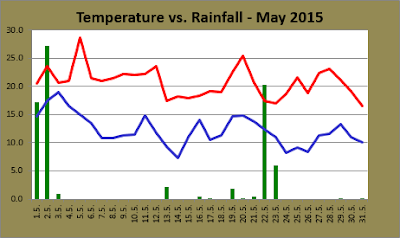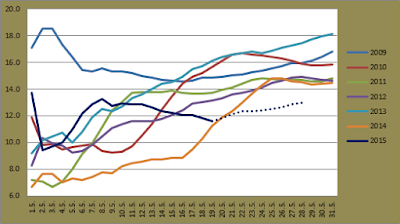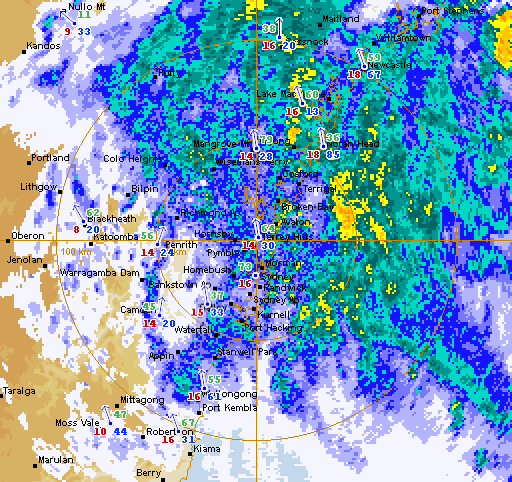Jyväskylä wasn't the only location in Finland to endure an extended spring. Almost all of the southern half of the country experienced below average temperatures. The southern coast and inland between Helsinki and Turku saw the biggest difference below average; up to 1.5C. Parts of Lapland, however, especially in the east, were slightly more than 1C above average.
Rainfall was above average at Tikkakoski, but there was very little storm activity throughout Finland during the month.
May figures from the previous seven years are shown below.
 |
| May averages at Jyväskylä Airport for the period 2009-2015 |
With an average maximum of 13.5C, May this year was 4.6C cooler than the May of 2013, and 1C cooler than the next coolest figure from last year. The Finnish Meteorological Institute recorded an overall average of 8.7C for the month, against 8.5C from my recordings. The 8.7C figure was the first below the 1981-2010 average of 8.9C since 2008.
The highest recording of the month at Tikkakoski came on May 25 when it reached 18.9C. This was well below figures from recent years. The next lowest respective figure since 2009 is 22.4C in 2011, while 2009, 2010, 2013 and 2014 all recorded days above 25C. The coldest maximum was also the lowest seen in May in the years since 2009. May 2 reached only 5.1C, just below 2014's 5.2C on May 4.
The highest minimum of 10.0C on May 27 was above the respective recordings from 2011 and 2012, but still quite far below last year's 14.1C and 2010's 15.2C. The coldest temperature overall was recorded on the 4th. The -3.0C recording then was one of only two minimums below zero during the month, and sits in the middle of the past seven years.
Extremes in Finland for the month ranged from -12.4C at Enontekiö's Näkkälä station on May 5 to Mikkeli's top of 21.7C on the 26th. The absence of any hellepäivät, or days above 25C, was the first instance for a May since 1998.
 |
| Daily minimums and maximums against rainfall for May at Jyväskylä Airport |
Rain measured 53.6mm at Tikkakoski during the month. FMI recorded a total of 51mm. Both figures are above the 1981-2010 average of 44mm, but well below last year's 124.6mm, which was only just below the overall record.
May 13 was the wettest day when 22.7mm fell. It was also the wettest day of the year to date, and only the second day of the year with a total above 10mm. There were 20 days of precipitation, but the 14th of the month was the only other day to see more than 5mm. It was also part of a 10 day rain streak. Dry weather during the month was scarce. The longest dry streak was only two days, which occurred three times.
Despite the high number of rain days and the whole country recording above average rainfall totals, storm activity was rare. FMI reported only 331 groundstrikes. This is the third lowest figure for a May since 1960. In comparison, FMI reported over 25,000 lightning strikes for May in 2014.










































